LEWES
by Garth Christian
Photography by A. Costa
Taken from the November 1951 edition of History Today ed. Peter
Quennell and Alan Hodge
“Dined at The White Hart, Lewes...ate the best duck
sauce I ever tasted,” wrote Sylas Neville, squire,
physician and student of law in his Diary for September, 1771.
“What a pity it is that this delightful place is so near
London, owing to which every-thing is very dear”. He is not
the only man to have mourned this fact, 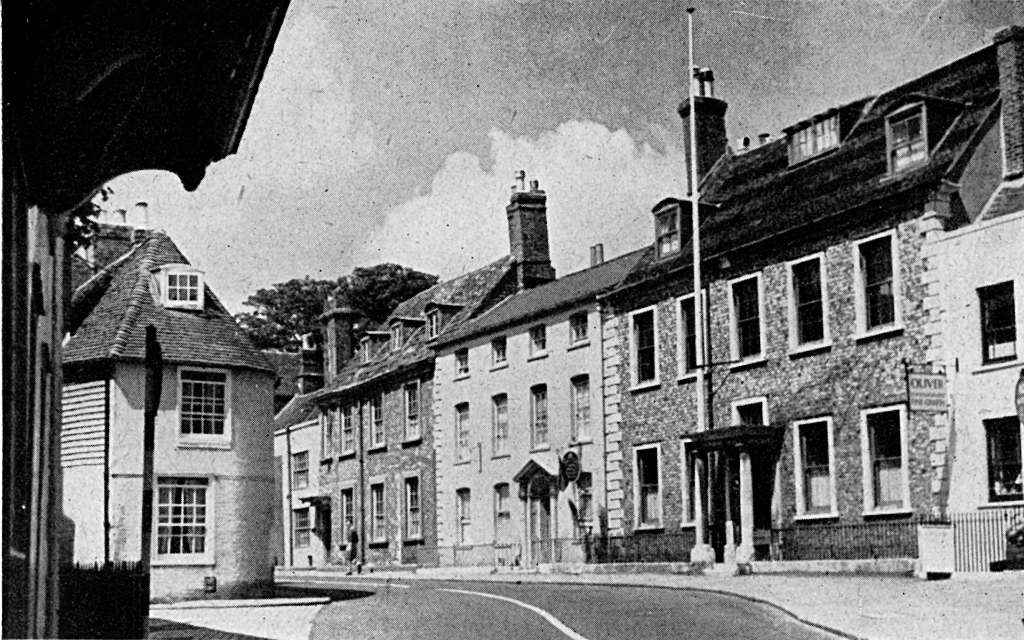 though the cost of living in Lewes to-day is no higher
than in any other Sussex town and probably lower than in most.
Each summer, however, the citizens of the borough find it hard
not to regret their town's geographical position — seven
miles from the sea and forty-nine from Westminster Bridge —
to quote the milestone in Lewes High Street.
though the cost of living in Lewes to-day is no higher
than in any other Sussex town and probably lower than in most.
Each summer, however, the citizens of the borough find it hard
not to regret their town's geographical position — seven
miles from the sea and forty-nine from Westminster Bridge —
to quote the milestone in Lewes High Street.
Yet few country towns near London have so completely retained
their ancient character. True, new housing estates have scarred
the Downs not far from Mount Harry, where that “detestable
Battle of Lewes” was fought 700 years ago. True, there was
talk a few months ago of building a greyhound stadium in the
town; and less than six years have passed since a Sub-Committee
of the Town Council proposed that several of the Georgian houses
in the High Street should be demolished and the road widened,
leaving the Church of St. Michael — with a round tower and
west wall built in the thirteenth century — to form an
island between streams of passing traffic. This suggestion, like
the proposal to construct a greyhound track, aroused strong
opposition, and Lewes remains what it has long been, a handsome,
thriving market town largely dependant for its prosperity on the
farming community around. 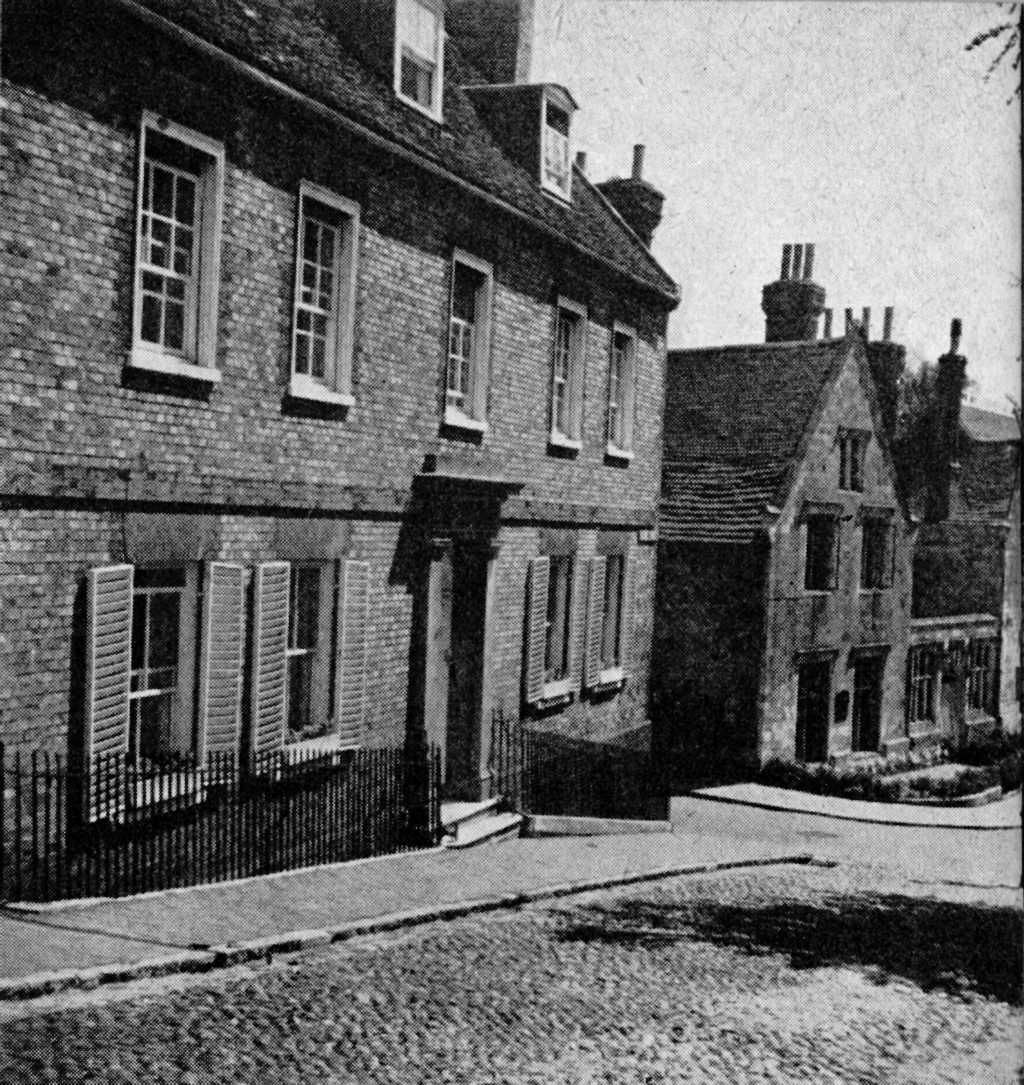 It is
the home of good craftsmen and efficient shopkeepers, and the
County Town of East Sussex.
It is
the home of good craftsmen and efficient shopkeepers, and the
County Town of East Sussex.
The same committee of planners who excited so much wrath by
their proposed alterations in the High Street deserved equally
fervent congratulations for warning Lewes people of the dangers
of industrialism and suburbanization — two evils which have
been avoided — though they were certainly right to plead
for the introduction into the town of more light industries.
There was a time in the nineteenth century when shipbuilding
fourished here; and for more than a hundred years ironworks in
the borough have been producing work of merit. But the wealth of
the town, the splendour of its architecture and the contentment
of its people, spring from the position it occupies, as the
administrative centre for a large and thriving countryside. Every
Monday, there is a cattle market, and each September a sheep and
cattle fair, which prospered in 1720 and may have its origin even
earlier. Until recently there was also a wool fair, attended by
farmers who boasted that their ancestors were present when it was
held in the 1830s and as long ago as the thirteenth century Lewes
was a centre of the English wool trade.
Splendidly placed on the steep slopes of the South Downs
guarding the valley of the Ouse, Lewes derives its name from the
old English word “hlæw” meaning
“hill”. The Rev.T. W. Horsefield in his History and
Antiquities of Lewes, published in 1824, considered that
“the face of the country south of the town does not present
to the stranger any remarkable features of beauty”, and
Sylas Neville some forty years earlier found the Downs to the
South East between Brighton and Eastboume “hilly and
unpleasant and fit, the greater part at least, only for
sheep-walks”. Yet even our forbears never 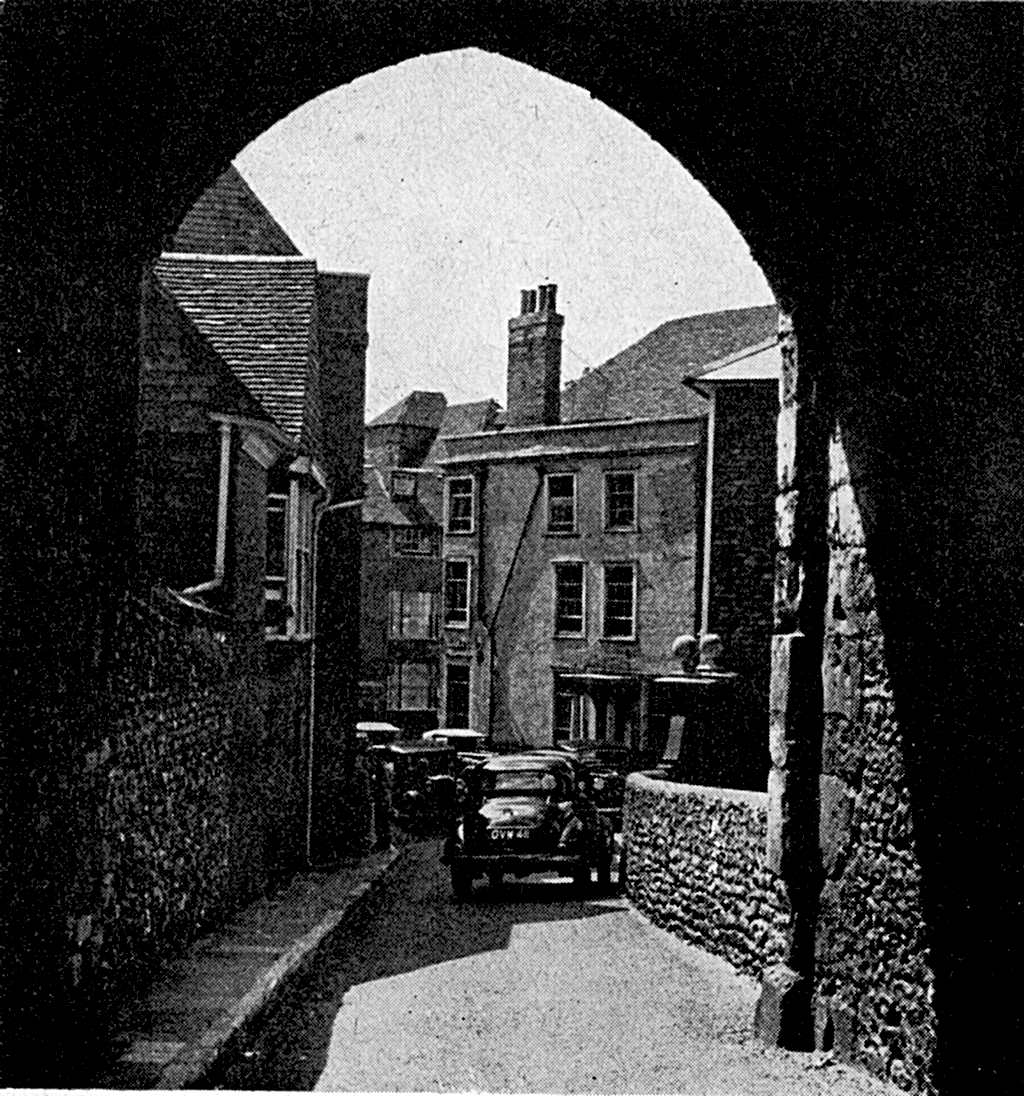 doubted Lewes' strategic and
commercial importance. In the days of Edward the Confessor it was
the chief town of East Sussex, and the Domesday Book mentions it
as a port of some size. To its wealth and importance the Norman
Conquest greatly added, William granting the Rape of Lewes to his
henchman William de Warenne, who fought beside him at Hastings.
Soon the Norman Baron began to build the Castle, of which the
ruins still look down from one of the twin mounds 65 feet above
the High Street, with its massive keep and noble
fourteenth-century Barbican, guarding the road that climbs from
the High Street and passes the green where Lewes men have played
bowls through two or three centuries.
doubted Lewes' strategic and
commercial importance. In the days of Edward the Confessor it was
the chief town of East Sussex, and the Domesday Book mentions it
as a port of some size. To its wealth and importance the Norman
Conquest greatly added, William granting the Rape of Lewes to his
henchman William de Warenne, who fought beside him at Hastings.
Soon the Norman Baron began to build the Castle, of which the
ruins still look down from one of the twin mounds 65 feet above
the High Street, with its massive keep and noble
fourteenth-century Barbican, guarding the road that climbs from
the High Street and passes the green where Lewes men have played
bowls through two or three centuries.
It was a momentous day for the borough when the Baron and his
wife Gundrada decided to visit Rome. The troubled state of France
prevented them from advancing beyond Burgundy, where they visited
the Abbey of Cluny; and so impressed was de Warenne that he
invited the monks to Lewes, where in 1077 they founded the vast
Priory of Saint Pancras, the first Cluniac Priory in England, on
forty acres of ground at Southover. Here in the Priory School,
Archbishop Peckham probably acquired his learning. Here in May,
1264, came King Henry III before his armies were overthrown on
Mount Harry — not named after him — to the west of
the town, by the forces of Simon de Montfort. “Then was the
field covered with dead bodies, and gasping and groanyng was
heard on every side,” wrote Fabyan. “For eyther was
desyrous to bring the other out of lyfe, and the father spared
not the sonne, nor the sonne the father... chisten bloude that
day was shed without pitie.” Deserted by his friends, the
King withdrew to the Priory; his brother Richard, King of the
Romans, took refuge in a windmill next to St. Anne's Church, and
some of the Royal forces were besieged in the castle. But
resistance was useless. The King is said to have sent out two of
the monks, who met a couple of friars acting for the Barons. The
result was the treaty known as the Mise of Lewes.
During the thirteenth century, the Priory is said to have
fallen into a “lamentable condition,” though the next
hundred years saw an improvement, and churchmen led the rejoicing
that marked the feasts of St. Pancras Day and Whitsuntide. But
all was not well, as we may deduce from the eagerness with which
the men of Lewes besieged the castle during the Peasants' Revolt
of 1381, burning the rent rolls and seizing ten casks of wine.
The people of the town also backed the rebellion of Jack Cade in
1450, among them the Prior of Lewes with his monks and servants.
Then, in 1377, French invaders swept up the Ouse and captured the
Prior of Lewes, his release being secured only by payment of a
heavy ransom. At the Dissolution of the Monasteries, the Priory
of Lewes was granted to Thomas Cromwell, whose agent, 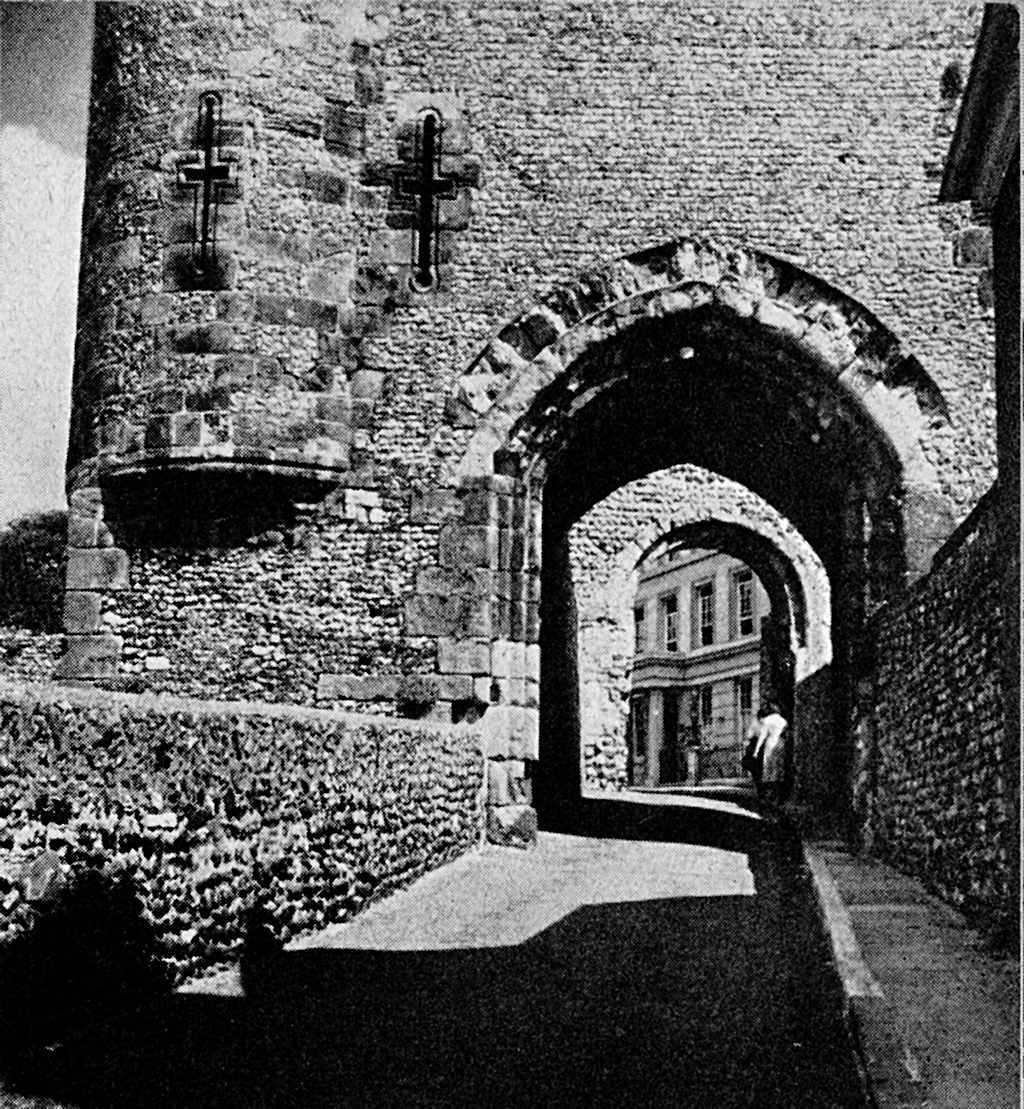 an Italian engineer named John
Portinari, set fire to wooden props which he had driven under the
Priory walls. Even walls of Caen stone, seven feet thick, cannot
survive much of this treatment. By the end of 1538 a large part
of the Priory had crumbled; many of the houses in the borough
were partially built of its stones; and to Cromwell's destruction
must be added four centuries of weather, the cutting of the
railway right through the Priory Church and the games of
generations of Lewes children. Yet so strong is the old stone, so
skilful was the craftsmanship of the Norman masons, that some
remnants of the Priory still stand.
an Italian engineer named John
Portinari, set fire to wooden props which he had driven under the
Priory walls. Even walls of Caen stone, seven feet thick, cannot
survive much of this treatment. By the end of 1538 a large part
of the Priory had crumbled; many of the houses in the borough
were partially built of its stones; and to Cromwell's destruction
must be added four centuries of weather, the cutting of the
railway right through the Priory Church and the games of
generations of Lewes children. Yet so strong is the old stone, so
skilful was the craftsmanship of the Norman masons, that some
remnants of the Priory still stand.
We know more of Tudor Lewes, thanks to the distinguished
Elizabethan historian and lawyer John Rowe. That he was one of
the vast number of Lewes citizens who through the ages have
served the town with little thought of personal profit is proved
by his modest charge of £11 11s. 2d. for the legal expenses
involved in a case he conducted in Chancery. Whereupon the people
of Lewes subscribed an extra pound which was acknowledged with
the receipt: “Received more in full satisfaction, twenty
shillings, John Rowe.” In his “Book”, dated
1622, he tells us that “there is and always has been time
out of mind within this borough a society of the wealthier and
discreeter sort of the townsmen, commonly called the Twelve, out
of which society the Constables are always chosen...” and
other officers, including “a Scavenger, a Pound Keeper, a
Searcher and Sealer of Leather, a Clerk of the Wheatmarket, a
Clerk of the Fish Market, a Clerk of the Butchery... and 4
Aleconners, being one to each parish within the borough.”
He reveals that the leading citizens of Lewes faced many
problems, among them, “nusances by gutters turned out of
men's houses into the hyestreete,” and “many
incroachments and sevueralle times and by sondry psons have biene
made and presented at the Lawdayes helde within this
Burrowe.” Rowe also records that the Burgesses chosen for
Parliament, “had wages allowed them,” and the
important event that occurred in 1512, when, “Agnes Morley,
widowe, founded the Grammer Schoole...” though Lewes may
have had a Grammar School connected with the Priory as early as
1248.
More generally remembered, however, is the burning at the
stake, in the Market Place opposite the Town Hall, of seventeen
Protestant martyrs, victims of the Marian persecutions of
1555-57. None of the martyrs was a native of Lewes, the first
victim, Diricke Carver, being a Fleming by birth, who had lived
in Sussex for less than a decade. He denied belief in
Transubstantiation, delighted in the Prayer Book of Edward VI,
and opposed the use of Latin in the services of the Church; for
how could men be saved, he argued, by words they did not
understand. He also admitted that since the Coronation of Queen
Mary he had not once been to Confession. “If Christ were
here,” he told his persecutors, “you would put him to
a worse death than he was put to before.” He died with an
English Bible beside him, pleading that others might forgive him
as he forgave them. Carver's boldness of spirit was matched by
that of Richard Woodman, a native of Buxted, then the centre of
the Sussex iron industry. The Rector of Buxted was an
enthusiastic reformer during the reign of Edward VI. No sooner
was Mary on the throne than he experienced a change of heart and,
in the words of Foxe, “preached clean contrary to that
which he had before taught.” But Woodman was unable to
change his views and had dared to say so. He was arrested,
examined by Bonner, Bishop of London, released, and arrested
again one day when he was ploughing. He tells us that he
“trembled” as the Sheriff approached, but refused to
accompany his officers when he discovered that they had forgotten
to bring the warrant for his arrest. He fled to the woods, where
his wife 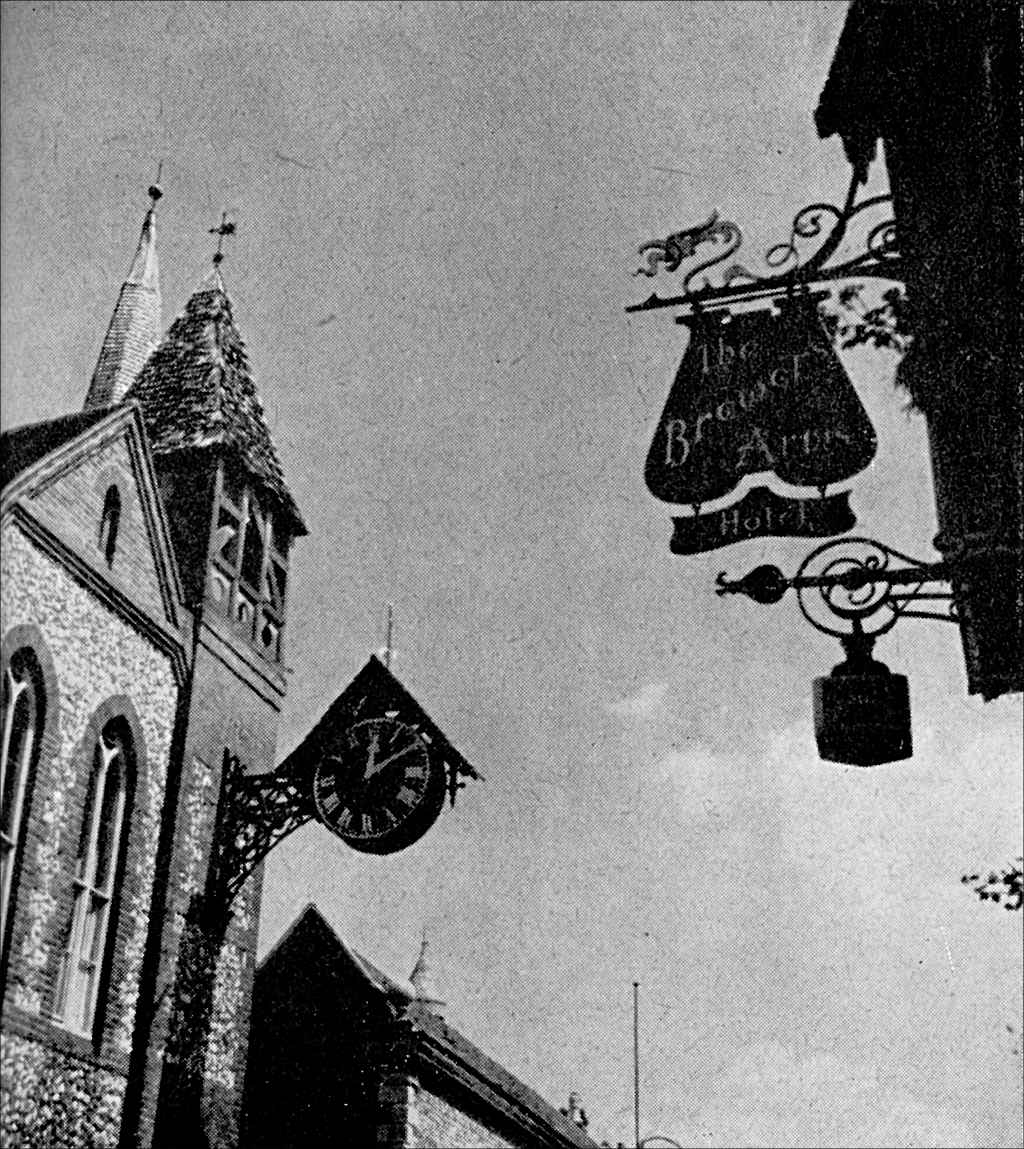 brought him food, and
escaped to France. Returning to England, he was again arrested
and examined by the Bishop of Chichester and his own Rector of
Buxted. “Your father (the Rector observed) is an honest man
and one of my parish and hath wept to me diverse times because
you would not be ruled; and he loveth you well, and so doeth all
the country, both rich and poor; if it were not for those evil
opinions which you hold.” Still Woodman refused to renounce
his views; and, on June 22, 1557, he died in Lewes Market Place
before a large crowd.
brought him food, and
escaped to France. Returning to England, he was again arrested
and examined by the Bishop of Chichester and his own Rector of
Buxted. “Your father (the Rector observed) is an honest man
and one of my parish and hath wept to me diverse times because
you would not be ruled; and he loveth you well, and so doeth all
the country, both rich and poor; if it were not for those evil
opinions which you hold.” Still Woodman refused to renounce
his views; and, on June 22, 1557, he died in Lewes Market Place
before a large crowd.
To judge by the wealth of Elizabethan and seventeenth-century
buildings which still survive, beside the splendours of the
Georgian architecture that was to flower later, the Lewes in
which John Evelyn was educated must have been an unusually
beautiful town. Evelyn lived with his grandfather, John
Stansfield, at Southover Grange, a handsome Tudor house of Caen
stone now used for art exhibitions, and studied with, “Mr.
Potts in the Cliffe and in 1630 from thence to the free schools
at Southover...” It was hoped he would go to “ Eaton,
but I was so terrified at the report of the severe discipline
there that I was sent back to Lewes.” The Civil Wars,
fortunately, left Lewes unscathed, though for many years
Puritanism remained militant in the borough; under the Act of
Uniformity (1662) two incumbents were ejected from their livings
and many of the laity were also offended by the Act, “for
they too have consciences”; while, after an open-air
service on the King's birthday in 1670, forty people were fined
for listening to what one of the Informers most indiscreetly
described as, “the best sermon I have ever heard”,
the preacher being the ejected Rector of Rodmell. In 1683 the
Bishop of Chichester was warned that “this part of your
Diocese, as it is remote from your Palace, so is filled with a
sort of men who are further remote from loyal principles than
perhaps any other...” How persistent was Puritan influence
is shown by the fate of the theatre, built in 1789 — there
had been an earlier temporary theatre, managed by Arthur Lee
— which gained much help from ten persons who subscribed
fifty pounds each in return for the promise of “free
admission to every performance for 21 years.” For a time
this theatre attracted most fashionable audiences including Lord
Eardley who was always escorted by six running footmen. But many
Lewes citizens could not forget William Law's warning:
“When you go to the Play-house... you go to the Devil's
peculiar Habitation... you submit to his Designs, and rejoice in
his Diversions”; and, having struggled on into the
nineteenth century, the theatre closed. Nor was the local
newspaper, the Lewes Journal, founded in 1745, always prosperous.
Lying before me as I write is a copy dated June 19, 1749.
“Gentlemen,” begins the leader, placed in the
left-hand column of the front page, “We think fit to
acquaint you that since Peace has been concluded, our list [of
readers] has dropt in its Number so much as to reduce our profits
considerably below Jurneyman's wages.” The paper contains
little local news but a quantity of information about world
affairs. “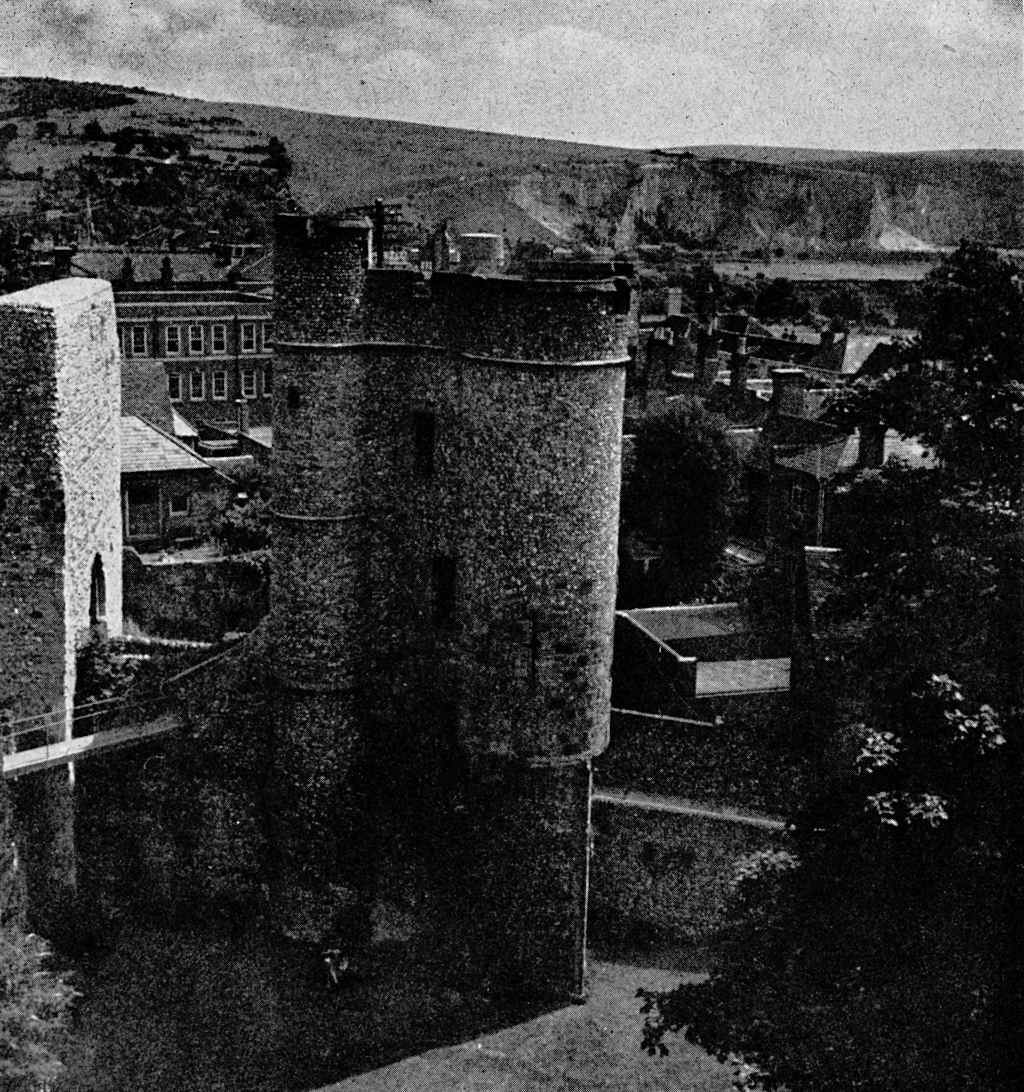 The world talks
of peace and prepares for war,” complains a writer,
“and the Russians are massing vast armies on their
frontiers.” On the back page appears an item of news from
Cambridge: “We hear that two or three of the students at
Cambridge have been expelled from the University for uttering
some very indecent expressions against the present
Government.”
The world talks
of peace and prepares for war,” complains a writer,
“and the Russians are massing vast armies on their
frontiers.” On the back page appears an item of news from
Cambridge: “We hear that two or three of the students at
Cambridge have been expelled from the University for uttering
some very indecent expressions against the present
Government.”
Lewes in the eighteenth century was described by Defoe as
“a fine pleasant town, well built, agreeably situated in
the middle of an open champaign country and on the edge of the
South Downs, the pleasantest, and most delightful of their kind
in the nation... but that which adds to the character of this
town is that both the town and the country adjacent, is full of
gentlemen of good families and fortunes, of which the Pelhams may
be named with the first... and also the antient families of Gage,
Shelly, etc., formerly Roman, but now Protestant, with many
others.” It was these “antient families” who
built and repaired the many-coloured houses that now give
elegance and dignity to Lewes High Street. Some of the finest
stand to the east of the twelfth-century Church of St. Anne's and
opposite Shelley's Hotel, an interesting Elizabethan building
with mural paintings in one room of trellis framing floral
patterns. Westgate Chapel, further down the street, is the shell
of the house that Sir Henry Goring built in 1583; and beside it
is Bull House, a fifteenth-century building in which once lodged
Thomas Paine who married the owner's daughter, Elizabeth Ollive,
in 1771. Next to St. Michael's Church is a sixteenth-century
house that belonged to Lord Howard of Effingham, and a few yards
away stands Castle Place, the home of Dr. Gideon Mantell, the
geologist who discovered the Iguanodon. Beyond lies Barbican
House, headquarters of the Sussex Archaeological Society, an
Elizabethan building remodelled in the eighteenth century. Here
are a Museum and Library, the latter approached by a staircase
with spiral balusters of the time of Charles II. A notice on the
librarian's table, requesting readers to replace volumes, is
dated 1889.
Near the County Hall, built of Portland stone in 1812, is the
site of Newcastle House, originally a coffee house with assembly
rooms provided by the Duke of Newcastle who lived nearby at
Halland. The Town Hall beyond, with its fourteenth-century
undercroft and Elizabethan panelling in the Council Chamber, may
have been part of the home of Robert Spicer, M.P. for Lewes in
1322.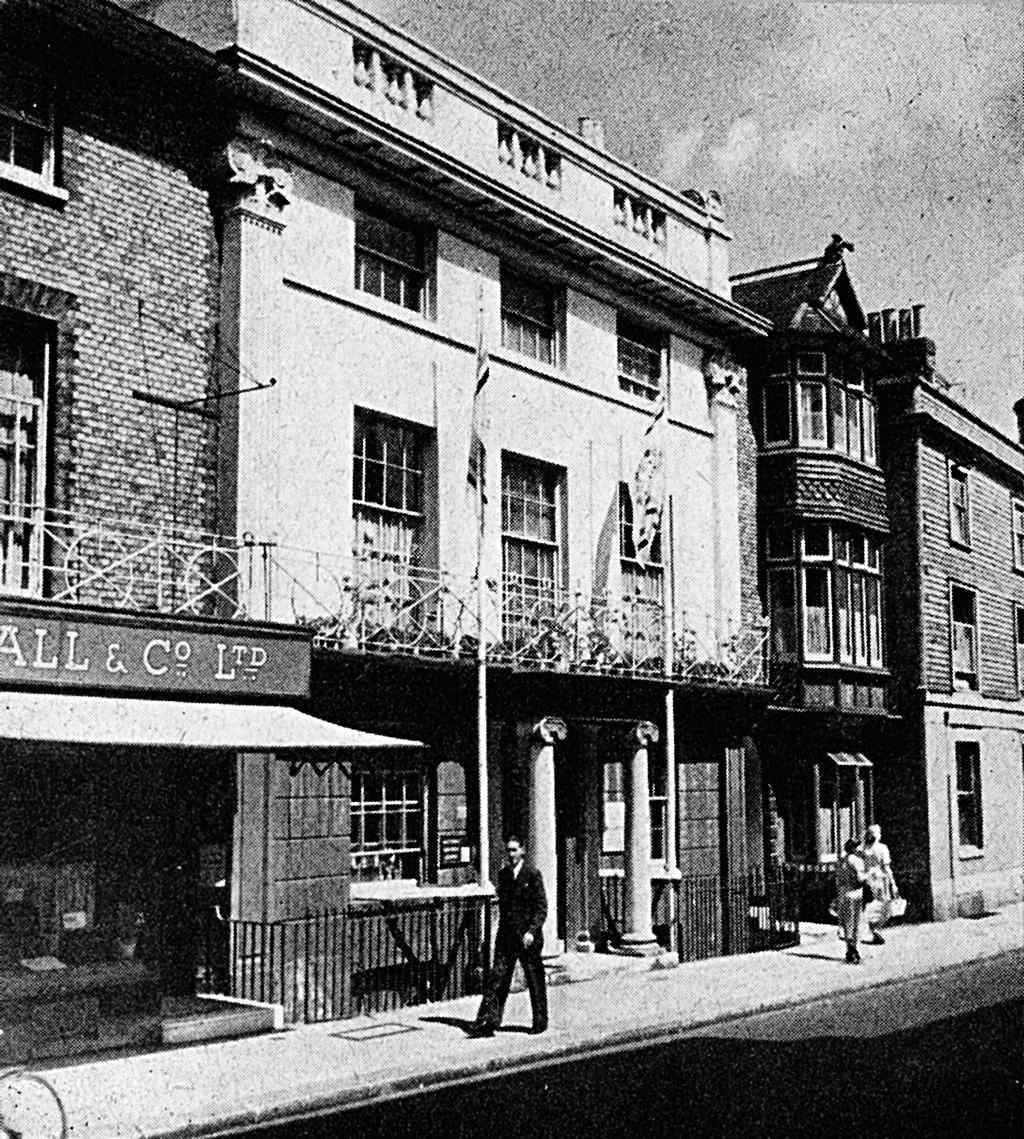 Across the road, in the
White Hart Hotel, Tom Paine used to argue with his friends, and
Sylas Neville learned that the landlord had lately paid
“£25 a year to the Shepherds (on the Downs) for
wheatears at ½d. each.” A few yards away the Clerk
to the East Sussex County Council has his office in Pelham House
which George Goring built in 1579 at a cost of £2,000; and
below the market place is the shop where John Baxter, stationer
and book-seller, published his Guides to Lewes, and showed a
farmer's account book to one William Cobbett, who, in 1822, found
Lewes, “a model of solidity and neatness... the people
well-dressed and the girls remarkably pretty...” To-day
farmers can still buy their account books from Mr. Baxter's shop
next to the old premises — 37 High Street — where
Baxter's son, George, developed the art of Thomas Bewick by
inventing oil-colour printing.
Across the road, in the
White Hart Hotel, Tom Paine used to argue with his friends, and
Sylas Neville learned that the landlord had lately paid
“£25 a year to the Shepherds (on the Downs) for
wheatears at ½d. each.” A few yards away the Clerk
to the East Sussex County Council has his office in Pelham House
which George Goring built in 1579 at a cost of £2,000; and
below the market place is the shop where John Baxter, stationer
and book-seller, published his Guides to Lewes, and showed a
farmer's account book to one William Cobbett, who, in 1822, found
Lewes, “a model of solidity and neatness... the people
well-dressed and the girls remarkably pretty...” To-day
farmers can still buy their account books from Mr. Baxter's shop
next to the old premises — 37 High Street — where
Baxter's son, George, developed the art of Thomas Bewick by
inventing oil-colour printing.
Some seventy years before Cobbett had found the manners of
Lewes waitresses “civil without being servile,” Dr.
John Buxton remarked of the Sussex people that, “their
manners are not the most gentlemanlike or agreeable, but neither
are they quite barbarous.” He found their cooking
“neither dainty nor expensive,” and adds that the
women are “fond of labour and experienced in
household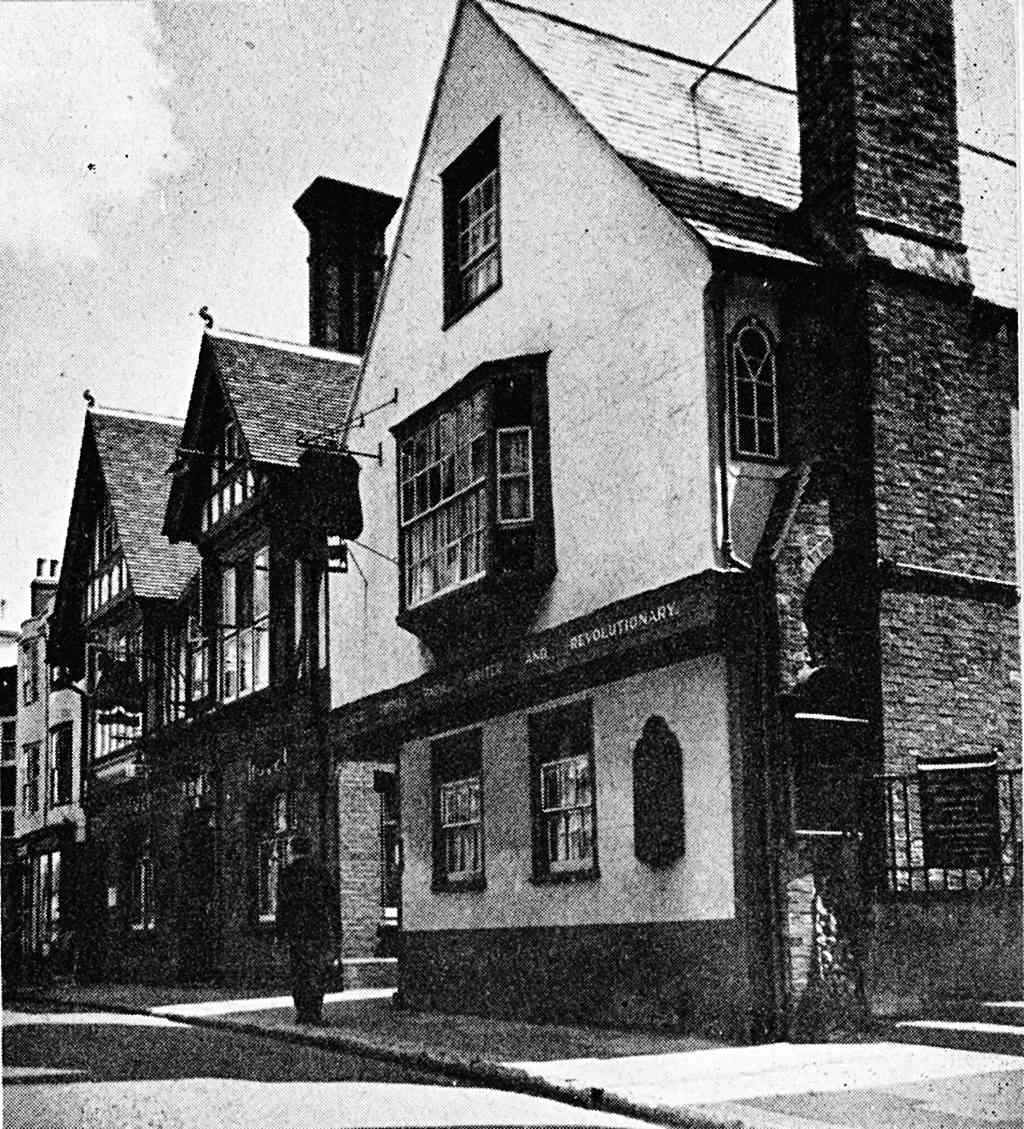 matters, both by
nature and education better bred and more intellectual generally
than the men.” Though the roads of Sussex during the
eighteenth century were notoriously bad, in 1762 advertisements
appeared announcing “New Flying Machines hung on steel
springs, very neat and commodious,” and able to carry four
passengers to London on alternate days, “faire 13/-
(inside).” These coaches prospered, and by 1826 coaching
receipts between London and the Sussex coast amounted to
£100,000 a year. It is clear that the Lewes of Regency
times deserved its description in Blackwoods as “a gay
little town”. The Races, which had flourished at least
since the days of Queen Anne, continued to thrive, often lasting
for a week, with parties for the fashionable each night. Those
who regularly hastened down from London to taste the air and
touch the water of Brighton must have been grateful to Dr.
Richard Russell, the Lewes doctor who, to misquote Thackeray,
“invented Brighton”. The Prince Regent was a frequent
visitor and is reported once, for a wager, to have driven a coach
down precipitous Keere Street. At the bottom of this exciting
street, beyond Southover Grange, lies the High Street of
Southover with many eighteenth-century houses, and the parish
church that may have formed part of the Hospitium at the gate of
the Priory. Not the least important of the many attractive
buildings in this street is Anne of Cleeve House, now the Folk
Museum of the Archaeological Society. Some day a new wing may be
added to house the Every Collection of Ironwork now crammed in
the basement; but meanwhile it contains some fine tapestries and
a collection of books which children used to read, “The
Polite Little Children” (1836) for instance, and also
“Juvenile Research, being a description of the principal
towns of West Sussex, interspersed with various pieces of poetry
by a Sister... the whole being composed and printed by a boy of
14” (1835).
matters, both by
nature and education better bred and more intellectual generally
than the men.” Though the roads of Sussex during the
eighteenth century were notoriously bad, in 1762 advertisements
appeared announcing “New Flying Machines hung on steel
springs, very neat and commodious,” and able to carry four
passengers to London on alternate days, “faire 13/-
(inside).” These coaches prospered, and by 1826 coaching
receipts between London and the Sussex coast amounted to
£100,000 a year. It is clear that the Lewes of Regency
times deserved its description in Blackwoods as “a gay
little town”. The Races, which had flourished at least
since the days of Queen Anne, continued to thrive, often lasting
for a week, with parties for the fashionable each night. Those
who regularly hastened down from London to taste the air and
touch the water of Brighton must have been grateful to Dr.
Richard Russell, the Lewes doctor who, to misquote Thackeray,
“invented Brighton”. The Prince Regent was a frequent
visitor and is reported once, for a wager, to have driven a coach
down precipitous Keere Street. At the bottom of this exciting
street, beyond Southover Grange, lies the High Street of
Southover with many eighteenth-century houses, and the parish
church that may have formed part of the Hospitium at the gate of
the Priory. Not the least important of the many attractive
buildings in this street is Anne of Cleeve House, now the Folk
Museum of the Archaeological Society. Some day a new wing may be
added to house the Every Collection of Ironwork now crammed in
the basement; but meanwhile it contains some fine tapestries and
a collection of books which children used to read, “The
Polite Little Children” (1836) for instance, and also
“Juvenile Research, being a description of the principal
towns of West Sussex, interspersed with various pieces of poetry
by a Sister... the whole being composed and printed by a boy of
14” (1835).
Throughout the Southern counties many people know Lewes best
for its Bonfire Night celebrations held in the town at least
since the eighteenth century. “Is it reasonable or right
(enquired in the local press a newcomer to the town as late as
1904) that bonfires should be made in the middle of the streets?
Is it reasonable or right that little bits of boys, as well as
those who ought to know better, should be given a free hand to
fling fireworks at anybody they come across?” Today these
giant bonfires blaze on the Downs; but long processions of
citizens in fancy dress still block the streets, and there
remains one Bonfire Society, out of half a dozen in the town,
whose officials continue to talk of the burning of the martyrs
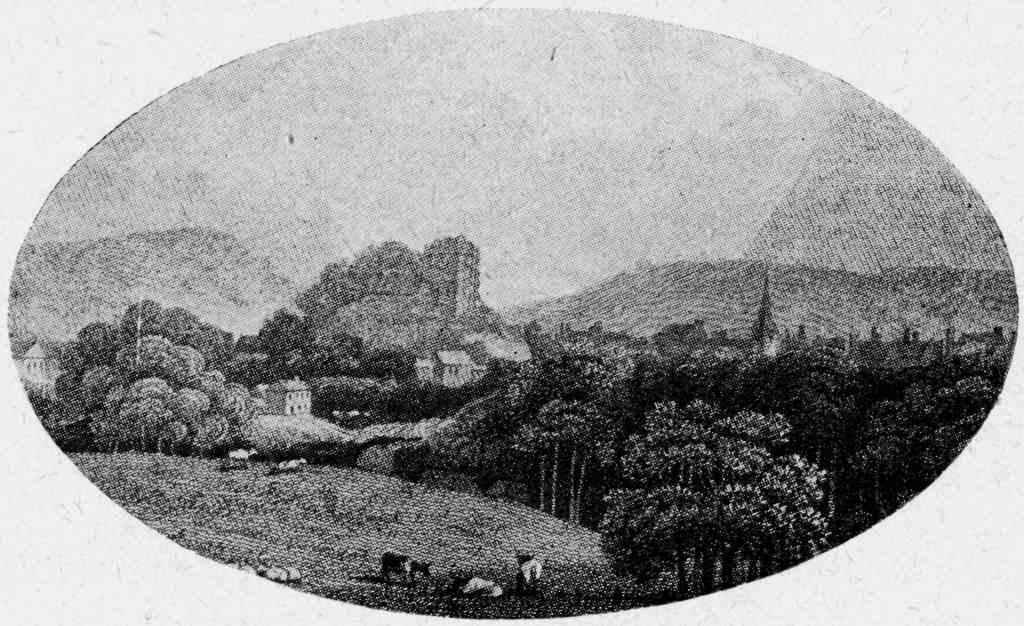 as if it had happened early
that morning. With two bands and 4,000 torches, they march to the
site of their fire, where the “Archbishop” delivers
the funeral oration, rich in religious fervour, and effigies of
Guy Fawkes and any hated figure of the day are flung on to the
flames amid cries of, “No Popery... Rule Britannia... God
Save the King.” In 1949 more than thirty people were
injured by fireworks, and several remained in hospital for many
weeks. Last year the police imposed a strict ban on the throwing
of fireworks, with the result that casualties were few —
though a number of offenders who defied the ban spent the night
in police cells. “I have never heard that Lewes is notably
Protestant on other days of the year,” wrote E. V. Lucas
fifty years ago; which is true enough, though, when the Lewes
Singing Club recently agreed to sing the Mozart Requiem Mass in
Southover Parish Church, so many protests reached the incumbent
that the event was transferred at the last moment to St.
Michael's Church, which has a largely Anglo-Catholic
congregation.
as if it had happened early
that morning. With two bands and 4,000 torches, they march to the
site of their fire, where the “Archbishop” delivers
the funeral oration, rich in religious fervour, and effigies of
Guy Fawkes and any hated figure of the day are flung on to the
flames amid cries of, “No Popery... Rule Britannia... God
Save the King.” In 1949 more than thirty people were
injured by fireworks, and several remained in hospital for many
weeks. Last year the police imposed a strict ban on the throwing
of fireworks, with the result that casualties were few —
though a number of offenders who defied the ban spent the night
in police cells. “I have never heard that Lewes is notably
Protestant on other days of the year,” wrote E. V. Lucas
fifty years ago; which is true enough, though, when the Lewes
Singing Club recently agreed to sing the Mozart Requiem Mass in
Southover Parish Church, so many protests reached the incumbent
that the event was transferred at the last moment to St.
Michael's Church, which has a largely Anglo-Catholic
congregation.
Lewes, in short, with its new County Grammar Schools, its
thriving Theatre Club, Singing Club, Annual Music Festival and
with Glyndebourne nearby, is one of the finest remaining examples
of a country town near London — small enough to be a
community where every man knows his neighbour, yet large enough
not to be dull. Those who visit the town must often feel that to
explore its streets is like reading the records in the
Archaeological Society's library — all the more poignant
and strangely satisfying,” writes A. L. Rowse,
“because it is the lives of men dead these hundreds of
years, whose eyes we yet look into — and find
ourselves.”
Set into HTML by John Warburton
with assistance from the Tesseract OCR Engine
and the GIMP image manipulation software.
Edited in Vim.
 though the cost of living in Lewes to-day is no higher
than in any other Sussex town and probably lower than in most.
Each summer, however, the citizens of the borough find it hard
not to regret their town's geographical position — seven
miles from the sea and forty-nine from Westminster Bridge —
to quote the milestone in Lewes High Street.
though the cost of living in Lewes to-day is no higher
than in any other Sussex town and probably lower than in most.
Each summer, however, the citizens of the borough find it hard
not to regret their town's geographical position — seven
miles from the sea and forty-nine from Westminster Bridge —
to quote the milestone in Lewes High Street. It is
the home of good craftsmen and efficient shopkeepers, and the
County Town of East Sussex.
It is
the home of good craftsmen and efficient shopkeepers, and the
County Town of East Sussex. doubted Lewes' strategic and
commercial importance. In the days of Edward the Confessor it was
the chief town of East Sussex, and the Domesday Book mentions it
as a port of some size. To its wealth and importance the Norman
Conquest greatly added, William granting the Rape of Lewes to his
henchman William de Warenne, who fought beside him at Hastings.
Soon the Norman Baron began to build the Castle, of which the
ruins still look down from one of the twin mounds 65 feet above
the High Street, with its massive keep and noble
fourteenth-century Barbican, guarding the road that climbs from
the High Street and passes the green where Lewes men have played
bowls through two or three centuries.
doubted Lewes' strategic and
commercial importance. In the days of Edward the Confessor it was
the chief town of East Sussex, and the Domesday Book mentions it
as a port of some size. To its wealth and importance the Norman
Conquest greatly added, William granting the Rape of Lewes to his
henchman William de Warenne, who fought beside him at Hastings.
Soon the Norman Baron began to build the Castle, of which the
ruins still look down from one of the twin mounds 65 feet above
the High Street, with its massive keep and noble
fourteenth-century Barbican, guarding the road that climbs from
the High Street and passes the green where Lewes men have played
bowls through two or three centuries. an Italian engineer named John
Portinari, set fire to wooden props which he had driven under the
Priory walls. Even walls of Caen stone, seven feet thick, cannot
survive much of this treatment. By the end of 1538 a large part
of the Priory had crumbled; many of the houses in the borough
were partially built of its stones; and to Cromwell's destruction
must be added four centuries of weather, the cutting of the
railway right through the Priory Church and the games of
generations of Lewes children. Yet so strong is the old stone, so
skilful was the craftsmanship of the Norman masons, that some
remnants of the Priory still stand.
an Italian engineer named John
Portinari, set fire to wooden props which he had driven under the
Priory walls. Even walls of Caen stone, seven feet thick, cannot
survive much of this treatment. By the end of 1538 a large part
of the Priory had crumbled; many of the houses in the borough
were partially built of its stones; and to Cromwell's destruction
must be added four centuries of weather, the cutting of the
railway right through the Priory Church and the games of
generations of Lewes children. Yet so strong is the old stone, so
skilful was the craftsmanship of the Norman masons, that some
remnants of the Priory still stand. brought him food, and
escaped to France. Returning to England, he was again arrested
and examined by the Bishop of Chichester and his own Rector of
Buxted. “Your father (the Rector observed) is an honest man
and one of my parish and hath wept to me diverse times because
you would not be ruled; and he loveth you well, and so doeth all
the country, both rich and poor; if it were not for those evil
opinions which you hold.” Still Woodman refused to renounce
his views; and, on June 22, 1557, he died in Lewes Market Place
before a large crowd.
brought him food, and
escaped to France. Returning to England, he was again arrested
and examined by the Bishop of Chichester and his own Rector of
Buxted. “Your father (the Rector observed) is an honest man
and one of my parish and hath wept to me diverse times because
you would not be ruled; and he loveth you well, and so doeth all
the country, both rich and poor; if it were not for those evil
opinions which you hold.” Still Woodman refused to renounce
his views; and, on June 22, 1557, he died in Lewes Market Place
before a large crowd. The world talks
of peace and prepares for war,” complains a writer,
“and the Russians are massing vast armies on their
frontiers.” On the back page appears an item of news from
Cambridge: “We hear that two or three of the students at
Cambridge have been expelled from the University for uttering
some very indecent expressions against the present
Government.”
The world talks
of peace and prepares for war,” complains a writer,
“and the Russians are massing vast armies on their
frontiers.” On the back page appears an item of news from
Cambridge: “We hear that two or three of the students at
Cambridge have been expelled from the University for uttering
some very indecent expressions against the present
Government.” Across the road, in the
White Hart Hotel, Tom Paine used to argue with his friends, and
Sylas Neville learned that the landlord had lately paid
“£25 a year to the Shepherds (on the Downs) for
wheatears at ½d. each.” A few yards away the Clerk
to the East Sussex County Council has his office in Pelham House
which George Goring built in 1579 at a cost of £2,000; and
below the market place is the shop where John Baxter, stationer
and book-seller, published his Guides to Lewes, and showed a
farmer's account book to one William Cobbett, who, in 1822, found
Lewes, “a model of solidity and neatness... the people
well-dressed and the girls remarkably pretty...” To-day
farmers can still buy their account books from Mr. Baxter's shop
next to the old premises — 37 High Street — where
Baxter's son, George, developed the art of Thomas Bewick by
inventing oil-colour printing.
Across the road, in the
White Hart Hotel, Tom Paine used to argue with his friends, and
Sylas Neville learned that the landlord had lately paid
“£25 a year to the Shepherds (on the Downs) for
wheatears at ½d. each.” A few yards away the Clerk
to the East Sussex County Council has his office in Pelham House
which George Goring built in 1579 at a cost of £2,000; and
below the market place is the shop where John Baxter, stationer
and book-seller, published his Guides to Lewes, and showed a
farmer's account book to one William Cobbett, who, in 1822, found
Lewes, “a model of solidity and neatness... the people
well-dressed and the girls remarkably pretty...” To-day
farmers can still buy their account books from Mr. Baxter's shop
next to the old premises — 37 High Street — where
Baxter's son, George, developed the art of Thomas Bewick by
inventing oil-colour printing. matters, both by
nature and education better bred and more intellectual generally
than the men.” Though the roads of Sussex during the
eighteenth century were notoriously bad, in 1762 advertisements
appeared announcing “New Flying Machines hung on steel
springs, very neat and commodious,” and able to carry four
passengers to London on alternate days, “faire 13/-
(inside).” These coaches prospered, and by 1826 coaching
receipts between London and the Sussex coast amounted to
£100,000 a year. It is clear that the Lewes of Regency
times deserved its description in Blackwoods as “a gay
little town”. The Races, which had flourished at least
since the days of Queen Anne, continued to thrive, often lasting
for a week, with parties for the fashionable each night. Those
who regularly hastened down from London to taste the air and
touch the water of Brighton must have been grateful to Dr.
Richard Russell, the Lewes doctor who, to misquote Thackeray,
“invented Brighton”. The Prince Regent was a frequent
visitor and is reported once, for a wager, to have driven a coach
down precipitous Keere Street. At the bottom of this exciting
street, beyond Southover Grange, lies the High Street of
Southover with many eighteenth-century houses, and the parish
church that may have formed part of the Hospitium at the gate of
the Priory. Not the least important of the many attractive
buildings in this street is Anne of Cleeve House, now the Folk
Museum of the Archaeological Society. Some day a new wing may be
added to house the Every Collection of Ironwork now crammed in
the basement; but meanwhile it contains some fine tapestries and
a collection of books which children used to read, “The
Polite Little Children” (1836) for instance, and also
“Juvenile Research, being a description of the principal
towns of West Sussex, interspersed with various pieces of poetry
by a Sister... the whole being composed and printed by a boy of
14” (1835).
matters, both by
nature and education better bred and more intellectual generally
than the men.” Though the roads of Sussex during the
eighteenth century were notoriously bad, in 1762 advertisements
appeared announcing “New Flying Machines hung on steel
springs, very neat and commodious,” and able to carry four
passengers to London on alternate days, “faire 13/-
(inside).” These coaches prospered, and by 1826 coaching
receipts between London and the Sussex coast amounted to
£100,000 a year. It is clear that the Lewes of Regency
times deserved its description in Blackwoods as “a gay
little town”. The Races, which had flourished at least
since the days of Queen Anne, continued to thrive, often lasting
for a week, with parties for the fashionable each night. Those
who regularly hastened down from London to taste the air and
touch the water of Brighton must have been grateful to Dr.
Richard Russell, the Lewes doctor who, to misquote Thackeray,
“invented Brighton”. The Prince Regent was a frequent
visitor and is reported once, for a wager, to have driven a coach
down precipitous Keere Street. At the bottom of this exciting
street, beyond Southover Grange, lies the High Street of
Southover with many eighteenth-century houses, and the parish
church that may have formed part of the Hospitium at the gate of
the Priory. Not the least important of the many attractive
buildings in this street is Anne of Cleeve House, now the Folk
Museum of the Archaeological Society. Some day a new wing may be
added to house the Every Collection of Ironwork now crammed in
the basement; but meanwhile it contains some fine tapestries and
a collection of books which children used to read, “The
Polite Little Children” (1836) for instance, and also
“Juvenile Research, being a description of the principal
towns of West Sussex, interspersed with various pieces of poetry
by a Sister... the whole being composed and printed by a boy of
14” (1835). as if it had happened early
that morning. With two bands and 4,000 torches, they march to the
site of their fire, where the “Archbishop” delivers
the funeral oration, rich in religious fervour, and effigies of
Guy Fawkes and any hated figure of the day are flung on to the
flames amid cries of, “No Popery... Rule Britannia... God
Save the King.” In 1949 more than thirty people were
injured by fireworks, and several remained in hospital for many
weeks. Last year the police imposed a strict ban on the throwing
of fireworks, with the result that casualties were few —
though a number of offenders who defied the ban spent the night
in police cells. “I have never heard that Lewes is notably
Protestant on other days of the year,” wrote E. V. Lucas
fifty years ago; which is true enough, though, when the Lewes
Singing Club recently agreed to sing the Mozart Requiem Mass in
Southover Parish Church, so many protests reached the incumbent
that the event was transferred at the last moment to St.
Michael's Church, which has a largely Anglo-Catholic
congregation.
as if it had happened early
that morning. With two bands and 4,000 torches, they march to the
site of their fire, where the “Archbishop” delivers
the funeral oration, rich in religious fervour, and effigies of
Guy Fawkes and any hated figure of the day are flung on to the
flames amid cries of, “No Popery... Rule Britannia... God
Save the King.” In 1949 more than thirty people were
injured by fireworks, and several remained in hospital for many
weeks. Last year the police imposed a strict ban on the throwing
of fireworks, with the result that casualties were few —
though a number of offenders who defied the ban spent the night
in police cells. “I have never heard that Lewes is notably
Protestant on other days of the year,” wrote E. V. Lucas
fifty years ago; which is true enough, though, when the Lewes
Singing Club recently agreed to sing the Mozart Requiem Mass in
Southover Parish Church, so many protests reached the incumbent
that the event was transferred at the last moment to St.
Michael's Church, which has a largely Anglo-Catholic
congregation.